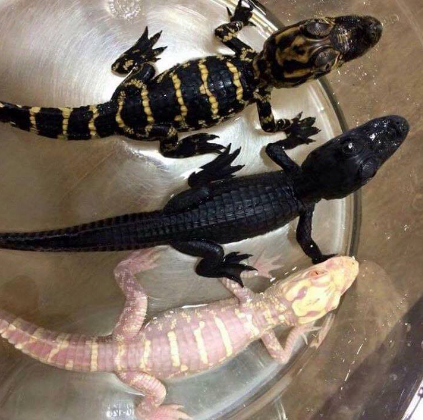Color of an Alligator: Exploring the Shades
Alligators, with their fearsome appearance and powerful presence, have fascinated people for centuries. While many are familiar with the overall appearance of these reptiles, there is curiosity surrounding the color of an alligator. In this article, we will delve into the various shades exhibited by alligators, explore the factors influencing their coloration, and provide insights into the significance of their hues. Join us as we unravel the captivating world of alligator colors.

Alligator
I. Understanding Alligator Coloration
Alligators possess a range of hues that contribute to their unique appearance.
Their coloration serves various purposes, including camouflage, thermoregulation, and communication.
II. Natural Color Variations
1. Dark Brown to Black: Many alligators display a dark brown to black coloration, which aids in their camouflage in murky waters and shadowy habitats. This darker hue helps them blend seamlessly into their surroundings.
2. Lighter Shades: Some alligators exhibit lighter shades, ranging from tan to olive green. These variations in color are often influenced by environmental factors and can be observed in different regions.
III. Factors Influencing Alligator Color
1. Genetics: Genetic factors play a significant role in determining an alligator's coloration. Inherited traits and genetic variations contribute to the wide range of colors observed in these reptiles.
2. Environmental Conditions: The environment in which alligators reside also influences their coloration. Factors such as water quality, vegetation, and exposure to sunlight can impact their overall appearance.
IV. The Role of Coloration
1. Camouflage: Alligator coloration aids in their ability to blend into their surroundings, making them less visible to prey and potential predators. Their dark or light hues allow them to remain concealed in different habitats.
2. Thermoregulation: The color of an alligator's skin can also influence its ability to absorb or reflect heat from the sun. Darker shades absorb more heat, while lighter shades reflect it, allowing for effective thermoregulation.
V. Protecting Alligator Habitats
Preserving the natural habitats of alligators is crucial for maintaining their vibrant coloration and overall survival.
Conservation efforts play a significant role in ensuring the continuation of these magnificent creatures.

Three colors of three small alligators
The color of an alligator is a fascinating aspect of their appearance, showcasing a range of shades from dark brown to black and lighter hues like tan and olive green. Their coloration serves important purposes such as camouflage and thermoregulation. Genetic factors and environmental conditions contribute to the variety of colors observed in different alligator species. By understanding and appreciating the significance of alligator colors, we can foster a deeper appreciation for these remarkable reptiles and work towards their conservation and protection.